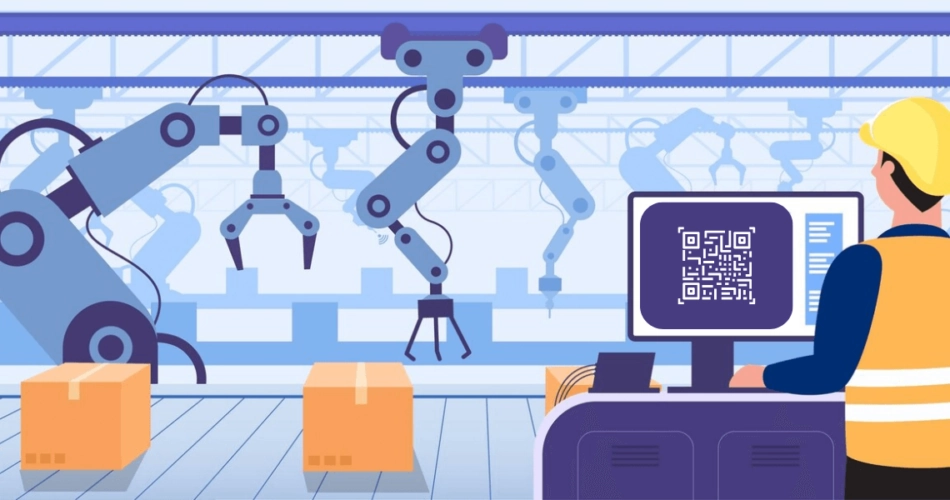From being a specialized technology, QR Codes are now a valuable tool for companies in various sectors.
They are about more than just scanning a code; they are about streamlining procedures and fostering client relationships.
QRs are helping businesses, from retail to healthcare, enhance their operations and customer engagement.
We’ll examine professional QR Code usage by industry to learn about their significant influence.
Links to in-depth articles on particular applications are also provided so you can discover how these codes might help your company.
Black is the most preferred color for QRs, chosen by 85% of users. Source: coolest-gadgets.com
A. Exploring QR Code applications across industries
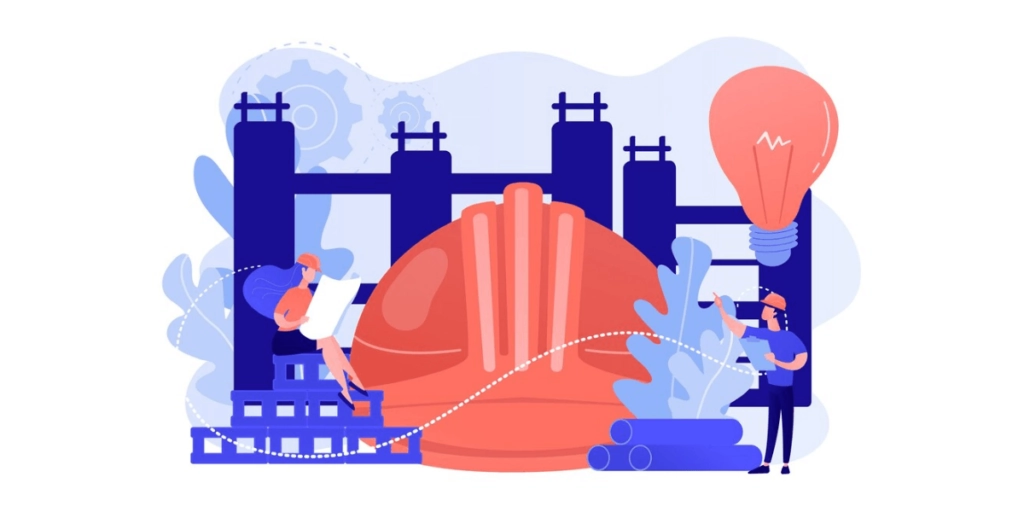
1. QR Codes in textiles
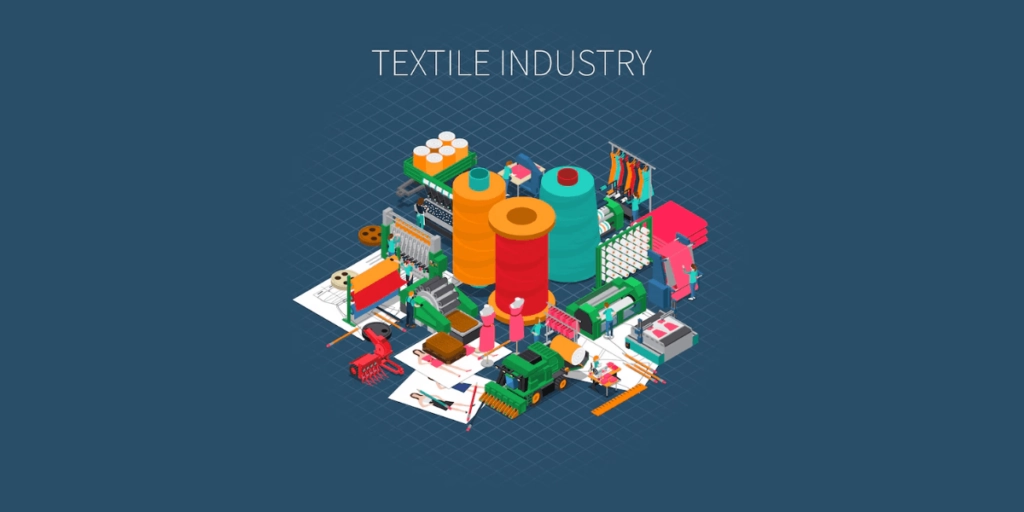
The textile sector has significantly benefited from the widespread use of QR Codes, which have improved consumer experiences and helped with product authentication.
QR Codes in textiles provide access to comprehensive details on a product’s origin, sustainability, and proper maintenance at a time when consumers are demanding greater openness and personalization.
a. Product authenticity and counterfeiting measures
The fashion business is plagued by counterfeiting, especially among luxury labels. Labels and tags with embedded QR Codes allow brands to provide customers with a convenient way to verify their purchases.
The code guarantees that consumers purchase authentic goods by directly linking to the brand’s official verification system.
Louis Vuitton is a top luxury brand that faces a lot of counterfeiting. To fight this, they use QR Codes on their products.
When customers scan the code, it takes them to a page that shows if the product is genuine. This gives buyers confidence they are getting an authentic item.
b. Supply chain transparency
QR Codes effectively help show the product history which is becoming increasingly popular as consumers are now interested in ethical sourcing.
The whole supply chain, from the raw materials utilized to the environmental effects of each production stage, can be seen by scanning the code. This degree of transparency is particularly crucial for certified organic or fair-trade textiles to instill trust in customers making purchases.
Patagonia cares about where its products come from. They use QR Codes to show customers the whole story.
A scan tells you where the materials came from, how the item was made, and its environmental impact.
This openness helps people make better choices when buying.
c. Managing inventories and logistics
Keeping track of substantial textile stocks can be challenging for producers and merchants. By giving each product a unique number, QR Codes facilitate this procedure.
Every scan that is performed on a fabric or garment changes its status as it travels through the supply chain, from the production to the warehouse to the store. This results in improved inventory tracking, decreased waste, and optimal stock levels.
Zara tracks garments from manufacturing to retail locations using QR Codes.
Every item has a unique QR Code that is scanned at every stage of the procedure.
By doing this, Zara can monitor its stock levels and avoid having too much or too little.
d. Interactive experiences and client interaction
Through QR Codes, brands may interact with customers after the transaction in a competitive retail setting.
For instance, a QR Code on a clothing tag may access an augmented reality virtual try-on experience or styling advice.
Brands may promote recurring business and foster customer loyalty by providing a more engaging purchasing environment.
Gucci adds QR Codes to some products that make shopping more fun.
By scanning the code, customers can unlock extra content, like videos about the product or a virtual try-on.
This creates a cool experience and keeps customers engaged with the brand.
e. Instructions for sustainability and care
Wearables with QR Codes on labels can last longer since they offer thorough care instructions. This is important since sustainability is becoming a significant concern for consumers and companies.
Fast fashion companies can lessen their environmental impact by encouraging customers to care for their clothing better.
H&M uses QR Codes to give customers more information on how to care for their clothes. The code shows washing and repair tips that help the clothes last longer. In some cases, it also gives recycling options.
Apparel and textile companies have witnessed a remarkable 20% surge in customer engagement by weaving QR Codes into their products. Source: Forbes
2. QR Codes in handloom and handicraft

QR Codes in handloom serve as a digital bridge that connects craftsmen in the handloom and handcraft industries with international marketplaces.
Through these straightforward codes, artisans—historically underserved by contemporary technology—can now verify their goods, share their tales, and even conduct direct sales to customers.
a. The story and craft specifics of the artists
Every handcrafted item has a distinct history or culture.
Customers can learn more about the artisan who created a product, the skills employed in its crafting, and its cultural value by scanning the QR Code that is connected to it.
In addition to increasing the product’s worth, this helps to maintain the histories associated with traditional crafts.
Dastkar uses QR Codes to tell the story behind each craft item. When customers scan the code, they learn about the artisan, the culture, and how the product was made.
This makes the product more valuable and helps keep traditional skills alive. For example, a handmade sari might have a QR Code that shares the weaver’s story and techniques.
b. Artists’ access to international markets
For craftspeople who might not have the financial means to promote their goods abroad, QR Codes democratize access to international marketplaces.
Customers can make direct sales and do away with middlemen.
They just have to scan the QR on a product to link to the artisan’s social media profiles or online store.
Nest assists craftspeople in marketing their creations to consumers worldwide.
Craftspeople can direct customers to their social media profiles or online storefronts using QR Codes.
For instance, a Kenyan basket maker can affix a QR Code to their baskets. Scanning boosts the artisan’s revenue by eliminating middlemen and enabling direct purchases.
c. Authenticity certification
Authenticity is crucial in the handcraft industry. To ensure that a product is authentically handmade and not a mass-produced replica, one can utilize QRs.
This is particularly significant for goods with geographical indicators, as the craft’s place of origin greatly influences the product’s worth.
Khadi uses QR Codes to verify that its products are authentic and handcrafted to prevent counterfeit goods.
Details about the fabric and its manufacturing location are displayed when you scan the code.
This is crucial for unique goods whose authenticity adds value, such as Banarasi sarees or Kanchipuram silk.
d. Special requests and custom orders
Customers can place custom orders with artisans directly with greater ease thanks to QR Codes.
By scanning the code, the customer may be sent to a form where they may outline their needs.
They can also contact the artisan directly to get customized goods.
To facilitate custom orders, several Etsy sellers employ QR Codes.
Customers are sent to a form where they can request personalized information, such as size or color, after scanning the code.
This makes ordering more individualized and helps buyers obtain precisely what they want, particularly for hand-painted or customized jewelry.
By including QRs in their handloom products, digitization of handloom products in the NorthEast will benefit 10,000 active looms in the region. Source: northeastlivetv.com
3. QR Codes in music industry
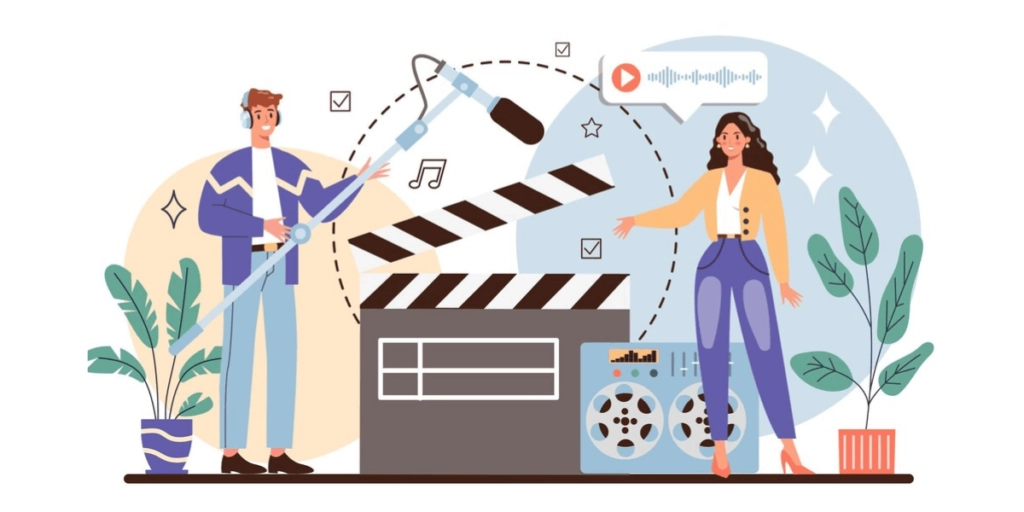
QR Codes in music industry are essential for record promotion, live event optimization, and building direct fan connections in the digitally revolutionizing music industry. Musicians can now access new cash streams with the use of QR Codes.
a. Tickets for concerts and event entry
At events like concerts, paper tickets are being replaced by QR Codes.
A QR Code that allows admission to the venue is sent to fans who purchase tickets online.
It also makes contactless access possible, which helps event planners handle big crowds more effectively.
Together, these two factors lessen the possibility of fake tickets.
Coachella uses QR Codes for ticket entry. When fans buy tickets online, they get a QR Code to enter the festival.
This makes it easy for fans to get in quickly without paper tickets. It also helps stop fake tickets and keeps the entry process smooth.
b. Streaming and record label promotion
One of the best tools for advertising new releases is the QR Code. These codes can be posted on social media, merchandising flyers, or promotional flyers.
They can instantly take people to streaming services so they can listen to an album or song.
Artists can also monitor interaction and gauge the effectiveness of their campaigns with this technique.
Flyers and posters for Billie Eilish’s album featured QR Codes. By scanning the code, fans can immediately listen to Apple Music or Spotify albums.
This increased the number of listeners and demonstrated the number of fans who engaged with the record marketing.
c. Merchandising and interaction with fans
QR Codes on items allow artists to increase fan involvement.
For instance, a QR Code on a t-shirt might lead to exclusive material like behind-the-scenes footage, live concerts, or first access to brand-new music.
This increases the value of physical merchandise by fortifying the bond between the artist and their fan base.
Coldplay incorporates QR Codes into their products. When fans purchase a shirt with a QR Code, they may scan it to watch exclusive content.
In addition to increasing the value of the stuff, this helps fans feel more connected to the band.
d. Provide direct donation support for artists
QR Codes are beneficial for independent artists as a direct funding source.
By avoiding conventional middlemen like record labels or ticket agencies, fans can donate directly to artists through QR Codes.
Indie artists on Bandcamp use QR Codes to get direct support from fans.
Artists put these codes on posters or merchandise; fans can scan them to donate or buy music directly.
This way, artists earn more without needing record labels or streaming platforms.
Some artists have seen a 20% increase in fan engagement by incorporating QRs into promotional materials like posters, albums, and merchandise. Source: Octiive
4. QR Codes in utilities
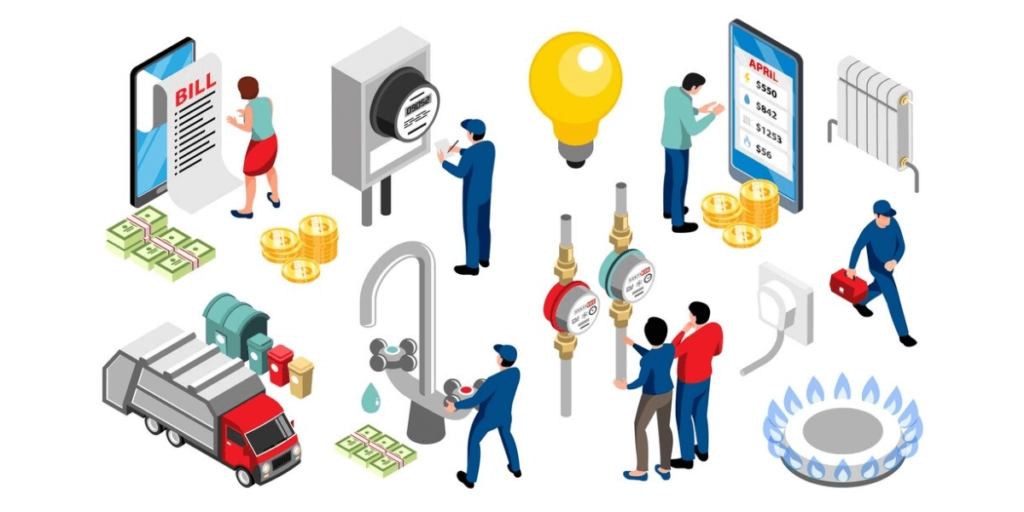
QR Codes in utilities help to modernize operations, deliver better service, and improve consumer interactions.
These codes lower operating expenses for providers while giving customers a smooth method to pay, track their consumption, and contact customer support.
a. Secure and fast bill payments
These days, billing statements from many utility companies have QR Codes. The clients may rapidly scan to pay their bills using mobile banking apps or payment systems.
This procedure speeds up transactions and lowers mistake rates by eliminating the necessity for human input.
Water bills with QR Codes are used by the Delhi Jal Board, which is in charge of the city’s water supply. Consumers can quickly pay by using their phone to scan the code.
This minimizes errors and makes bill payments quicker and easier without requiring lengthy account numbers or other information.
b. Infrastructure upkeep and administration
It can be challenging for utility providers to manage infrastructure like gas pipes, electricity grids, and water meters.
These parts’ QR tags give technicians rapid access to service histories and help them pinpoint issue areas.
Also, maintenance chores are done more quickly and effectively, minimizing downtime and service interruptions.
Enel, an energy company, uses QR Codes to manage its electricity network.
Technicians can scan codes on equipment like transformers to see service history and past repairs.
This helps them fix issues faster and reduces downtime for customers.
c. Tools for customer self-service
Customers can receive tailored data about their consumption habits and make educated decisions about their energy and water usage by scanning QRs on meters or other devices.
In particular, this can lower expenses and encourage environmental sustainability.
China South Power’s electricity meters are equipped with QR Codes. Consumers can examine their power usage in real-time by scanning the code.
This makes it easier for people to monitor their electricity consumption and identify strategies to reduce their energy use and save money.
d. Smart city utilization and ecological advantages
QR Codes are a component of bigger programs in smart cities that aim to build more effective urban settings.
Public utility codes facilitate real-time data collection and monitoring, optimizing resource allocation, cutting waste, and advancing the city’s sustainability objectives.
In Barcelona’s smart city project, QRs are used on utility boxes to track water, gas, and electricity use. Scanning the code lets city workers collect data and improve resource use.
In countries like India and Brazil, QR Code-based payment systems have become standard, with 70% of consumers preferring this method for paying utility bills, according to a 2023 study. Source: theeconomictimes
5. QR Codes for NFT

QR Codes are becoming crucial for bridging the digital and physical realms as NFTs (Non-Fungible Tokens) gather traction. Using QR Codes is a quick and easy method to engage with blockchain-based assets in the real world, transfer NFTs, and confirm ownership.
a. Connecting artistic media
Creators of NFTs frequently affix QR Codes for NFT to tangible pieces of art, which direct viewers to the blockchain’s match digital currency.
The physical and digital versions of the artwork are guaranteed to be verifiable with this additional layer of protection and authenticity.
In “The Currency,” a collection by artist Damien Hirst, each NFT is connected to a tangible work of art. Customers can scan the QR Code on the artwork.
This code demonstrates the authenticity and connection between the digital NFT and the tangible artwork.
b. Displays and NFT galleries
QR Codes enable visitors to galleries or shows using NFT artwork to view the digital version of the piece, examine its blockchain history, and even purchase straight from the artist’s marketplace.
In New York, SuperRare, an NFT marketplace, opened a gallery. Visitors can view digital artwork at this gallery and scan the QR Codes adjacent to each piece.
They can purchase the artwork straight from their phone after scanning the code to view its history on the blockchain. This enhances the enjoyment and interaction of the gallery visit.
c. Ownership verification and simple transferability
The buyer of an NFT can add the token to their digital wallet by scanning a QR Code after making a purchase.
This transferability makes buying and selling digital assets easier, especially in high-value transactions.
Nike developed “Cryptokicks,” a system that connects NFTs to unique footwear. Customers can claim the NFT for their digital wallet by scanning the QR Code on each sneaker.
Because of this, buyers can easily prove they own the NFT and transfer it if they decide to sell it in the future.
d. Limited editions and brand partnerships
Nowadays, many companies are working with NFT artists to produce limited-edition goods.
The object has a QR Code connecting to a special NFT, which verifies ownership and gives the customer access to virtual extras like avatars or VIP experiences.
Coca-Cola released a limited edition of NFT for International Friendship Day.
Special virtual experiences and avatars were made available by this NFT connected with a QR. It gave fans something special and increased their connection to the company.
In blockchain-based games, 35% of NFT games integrate QR Codes to grant players access to exclusive in-game assets, skins, or digital items. Source: sdlccorp
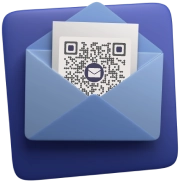

6. QR Codes in healthcare services

QR Codes in healthcare services increase productivity, improve patient care, and facilitate easy access to critical medical data.
These codes are now handy in public health campaigns, digital health services, and patient management.
a. Patient identification and medical records
Patient wristbands and ID cards are some places where QR Codes are integrated. This allows medical staff to access information quickly.
With a scan of the code, patient’s medical history, allergies, current medications, and other important details are readily available.
Mayo clinic uses QR Codes on patient’s wristbands. A quick scan provides the healtchare workers with full medical history and details.
b. Telemedicine and contactless services
With QRs, patients can book virtual consultations, access health reports, and download prescriptions. This makes healthcare more affordable and accessible for everyone.
Teladoc offers a service where they offer QRs linked directly to the patients. With the easy access available, there is hassle-free consultation with the doctors and the specialists.
c. Vaccination programs and public health campaigns
QR Codes prove very helpful when it comes to vaccination drives. People can easily book appointments, access vaccination records, and get real-time updates about their availability.
During COVID-19, the CDC used QRs to streamline the vaccination process. All the details about the vaccination, location information, and more were readily available.
Over 40% of hospitals globally have integrated QR Codes into their patient services, allowing patients to scan codes for quick access to appointment scheduling, medical reports, and treatment information. Source: nihgov
7. QR Codes in shipping and logistics
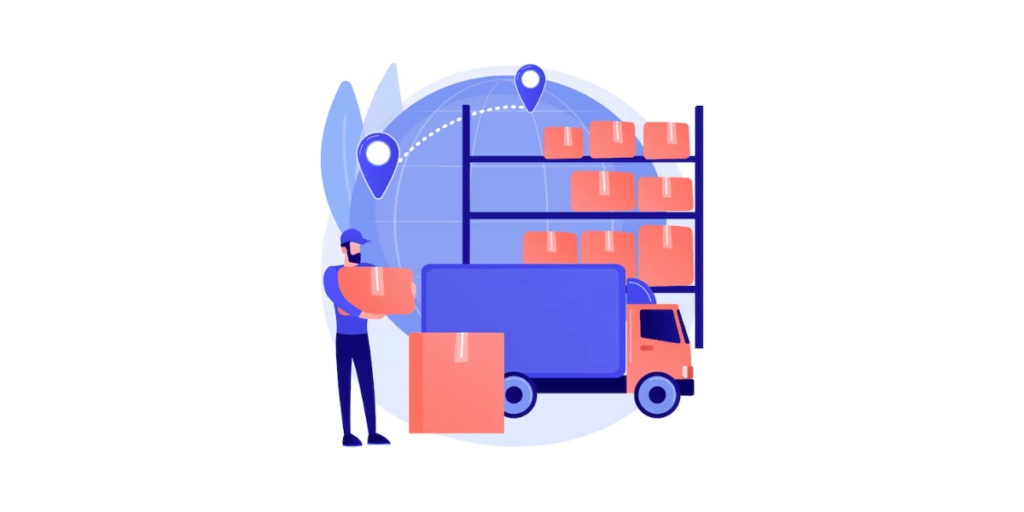
QR Codes in shipping and logistics help to increase productivity, simplify processes, and promote customer satisfaction.
Pairing them with productivity tracking software further helps monitor workflows and reduce delays.
In addition to general shipping, many companies are using QR Codes to streamline marine cargo tracking and compliance, improving efficiency and accuracy in the marine industry.
Modern logistics depend heavily on QR Codes to minimize human error in everything from inventory management to real-time tracking.
a. Instantaneous monitoring and updates
Packages come with embedded QR Codes that let businesses and customers follow the delivery process in real-time. Through code scanning, receivers can view projected delivery schedules, track the status of their cargo, and even reroute items if necessary.
FedEx uses QR Codes on their shipping labels. Customers can scan these codes to track their packages in real time.
They can see where their package is and when it will arrive. They can even reroute the package if needed, improving the delivery experience.
b. Storage and inventory management
QR Codes are crucial for managing high product volumes in logistics centers and warehouses. Every product or batch’s origin, destination, and storage needs are specified using a QR Code.
QR Codes also lower error rates when retrieving inventory from sizable warehouses by making item location easier and faster.
Inventory management is made easier with automated restocking. These systems scan an item’s QR Code to initiate reordering when its supply reaches a certain level.
Amazon manages its inventory in its warehouses by using QR Codes. Every item has a QR Code that indicates its origin and destination.
Employees can swiftly locate objects by scanning these codes, which expedites and minimizes errors.
The method keeps shelves supplied by automatically reordering items when they run low by scanning the QR Code.
40% of logistics companies globally now use QRs for real-time package tracking, allowing customers to scan codes and receive instant updates on the status of their shipments. Source: researchgate
8. QR Code for postoffice
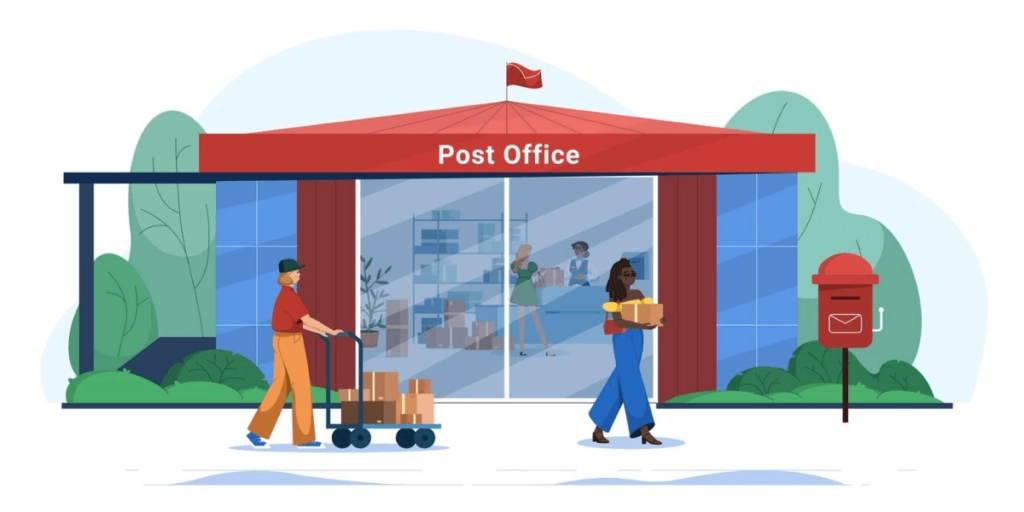
Post offices worldwide incorporate QR Codes into their operations to boost productivity, provide new digital services, and improve mail services.
Thanks to QR Codes for post offices, customers can now purchase postage, track packages, and access other postal services online more efficiently.
a. Real-time tracking of packages and mail
Senders and recipients can trace their goods in real-time by scanning the QR Codes on mail items. Every code scan yields a package trip update detailing everything from the package’s departure from the post office to its ultimate delivery.
QR Code tracking ensures that clients can always see their mail while it’s being transported.
Recording every package scan considerably decreases the likelihood of mail being lost or delayed.
Customers can trace their packages using QR Codes provided by the USPS. Every parcel has a unique QR Code that indicates its location along the way.
Customers can view updates from when it leaves the post office until it is delivered by scanning the code.
This lowers the possibility of items being delayed or misplaced and helps clients know where their mail is.
b. Online postal services and digital stamps
Specific postal systems have switched from traditional paper stamps to QR Codes that may be bought online. Without having to go to a real post office, these scannable digital stamps guarantee that the right amount of postage is applied.
By purchasing, printing, and applying QR Code stamps at home, they can avoid making excursions to the post office.
Because QR Code stamps are more difficult to fake, postal services are more protected.
Australia Post allows customers to buy digital stamps online. Instead of paper stamps, customers can get QR Code stamps to print at home.
These codes ensure the correct postage is used without visiting a post office. They are also harder to fake, which helps protect the postal service.
c. Arranging delivery and pick-up times
Customers can use QR Codes on their cell phones to arrange package pickups or deliveries. By scanning the QR Code on a receipt or notice, customers may decide the time and location of the delivery or pick-up.
Unlike typical postal services, customers can select convenient delivery times or pickup places via QR Codes.
Post offices provide contactless options for pickups and drops using QR Codes. These services are beneficial for businesses or large volumes of clients.
With QR Codes, online shoe and apparel retailer Zappos makes returns simple. Customers print a return label with a QR Code when they wish to return an item.
The staff swiftly processes the return by scanning the code when they go to do so. As a result, customers can quickly return things. At companies offering staff augmentation services, QR Codes ease onboarding with quick access to dashboards, credentials, and communication tools.
d. Mail services in hard-to-reach places
QR Codes are making it easier for those in isolated or rural areas to access postal services. Consumers no longer need to go to the post office because they can create QR Codes for their packages online, plan pickups, and follow deliveries.
Customers can initiate postal transactions using QR Codes without going far from their location.
The transport containers of the large shipping corporation Maersk are equipped with QR Codes.
Every container has a QR Code that provides information about its contents, origin, and destination.
Customers can view the container’s trip and status by scanning this code. This openness contributes to the shipping process’s increased credibility.
India Post employs QR Codes to make postal services more accessible in rural areas of the country.
Customers must visit a post office to schedule pickups, track deliveries, and generate QR Codes for their shipments online.
This makes it easier for residents in isolated places to acquire the required mail without making a long trip.
30% of US and European post offices have implemented QR Code-based self-service kiosks. Customers can scan codes to access services like printing labels, buying postage, and checking rates without human interaction. Source: encstore
9. QR Code for fundraising

Donors may now make contributions quickly and easily with the help of QR Codes.
Organizations that support causes and charities are using QR Codes for fundraising to improve donor engagement, expedite the donation process, and enhance transparency.
a. Instant QR Code donations
Fundraisers use QR Codes that lead to secure contribution portals in their marketing materials, such as flyers, posters, and websites.
Donors can immediately donate by scanning the code, which directs them to a payment site.
United Way uses QR Codes in its fundraising activities. Flyers and posters that connect to a secure contribution page are embedded with QR Codes.
Donors can quickly donate without completing lengthy forms by scanning the code with their phones.
b. Transparent use of funds
Charities and nonprofits can utilize QR Codes to associate themselves with specific campaigns or initiatives, giving contributors a clear understanding of how their money is used.
This openness promotes sustained support and fosters trust.
Water uses QR Codes on its materials to show donors where its money goes. Each QR Code takes donors to a page that explains how their money will help fund clean water projects. This openness helps build trust and encourages people to keep supporting their cause.
c. Fundraising through events
QR Codes offer guests at charity events a quick and straightforward option to make an instant donation.
QR Codes can be shown on screens, printed materials, or even items during events such as galas, walkathons, or online gatherings.
The American Cancer Society displays QR Codes on signs and printed materials at its Relay For Life events.
Attendees can learn more about their fundraising objectives or quickly donate by scanning these codes.
This helps increase the money raised for cancer research and makes it simple for attendees to donate while having fun at the event.
d. Networks of peers to peers
Through QR Codes, people can volunteer to promote a fundraising initiative.
Participants can promote donations via their networks by creating customized QR Codes to distribute to friends and family.
Using unique QR Codes, GoFundMe users may design their fundraising campaigns.
Fundraisers can encourage friends and relatives to donate or spread the word by sharing these codes with them.
This makes use of social networks to raise additional money.
In Australia, Donation Point Go’s Donation Point Tap service has allowed 700 charities to raise more than 4 million Australian dollars (equivalent to over 2.5 million US dollars) since its launch. Source: websiteplanet
10. QR Codes in agriculture

QR Codes facilitate direct consumer-farmer communication, streamlining resource management and enhancing transparency in the agriculture industry.
QR Codes in agriculture are revolutionizing agricultural products’ production, distribution, and retail, from farm-to-table tracking to effective equipment management.
a. Transparency from farm to table
QR Codes on food packaging allow customers to follow the items’ path from the farm to their plate.
This details the farm’s location, farming methods, and environmental initiatives.
Chobani’s yogurt container incorporates QR Codes.
Customers can discover the location of the farm, the farming practices employed, and the origins of the ingredients by scanning the code.
As a result, people are more likely to trust the brand and feel more attached to their food.
b. Agricultural management and equipment
Farmers use QR Codes to manage better resources like water and fertilizer, track agricultural equipment, and keep an eye on the condition of their crops.
QRs can be scanned for maintenance history, operational manuals, and service requirement alerts.
John Deere uses QR Codes to assist farmers in controlling their equipment.
Farmers can access a piece of equipment’s maintenance history, instructions, and service alerts by scanning its code.
Farmers find it simpler to maintain their farms and care for their equipment.
c. Direct marketing and sales to consumers
By directing consumers to online marketplaces or farm websites, QR Codes assist farmers in direct sales to consumers.
Customers can purchase fresh vegetables and specialty items or sign up for a farm’s weekly delivery service by scanning a QR Code on the box.
Numerous nearby farms sell directly to consumers by using QR Codes. A farmer might, for instance, affix a QR Code to a vegetable box.
Customers can purchase fresh produce or join up for a weekly delivery service by scanning the code and visiting the farm’s website.
This enables farmers to market their goods directly to a broader audience.
Using QR Codes for equipment management in Australia has helped large-scale farms reduce machinery downtime by 15%, optimizing productivity during crucial planting and harvesting seasons. Source: chatgpt
11. QR Codes in financial institutions
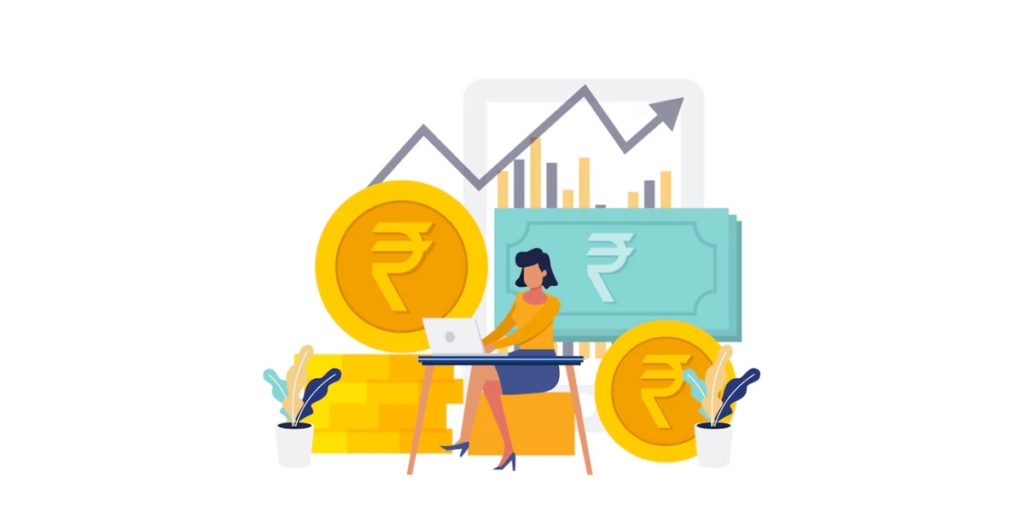
QR Codes are fast changing the banking industry by improving payment methods, increasing security, and expediting customer service.
Banks and financial organizations use QR Codes for various services, including contactless payments and digital banking.
a. Contactless payments and transfers.
QR Codes in financial institutions enable consumers to make immediate payments or transfers without using real cards or currency. To ensure secure, cashless transactions, financial institutions utilize QR Codes.
Bank of America clients can use QR Codes to withdraw cash from ATMs.
Rather than inserting a debit card, clients can generate a QR Code using their mobile app.
To finish the transaction, they scan this code at the ATM, which makes it a safe and contactless method.
Global QR Code payment transactions were valued at $2.7 trillion in 2022, which is expected to reach $4.7 trillion by 2025. Source: Juniper Research
B. More QR Code usage by industry
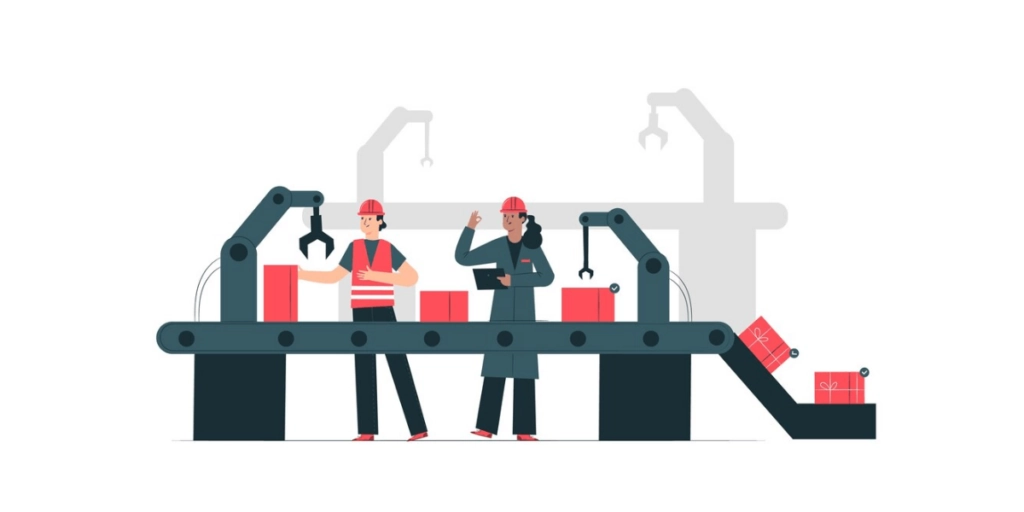
1. QR Codes in human resources

In human resources (HR), QR Codes have become an invaluable tool that enhances efficiency and engagement for both employers and employees.
Throughout the employee’s lifetime, QR Codes provide flexible solutions that may be used for everything from hiring to onboarding and internal operations.
a. Hiring and applying for jobs
HR departments use social media posts, career fair materials, and job advertisements to incorporate QR Codes into their recruitment campaigns.
Scan the code to view job descriptions, apply online, or send resumes to the employer.
Unilever’s hiring procedure uses QR Codes. They use QR Codes in human resources at their job fairs and on social media flyers.
Job seekers can instantly view job descriptions and submit an online application after scanning the code. As a result, people can apply for jobs more easily.
b. Training and onboarding of employees
QR Codes can provide new hires access to training materials, HR regulations, and other documents throughout the onboarding process. They can also be used to easily direct new hires to mentoring platforms, where they can receive personalized support and guidance.
Walmart uses QR Codes to help new employees learn about their jobs. New hires can scan QR Codes around the workplace to find training videos, rules, and employee handbooks.
This allows them to get the needed information and feel like they are part of the team.
c. Attendance and engagement of employees
QR Codes on performance management tools are widely used to track attendance in office, events, training sessions, or daily check-ins, eliminating the need for manual logging systems.
Cisco tracks attendees of events and training sessions using QR Codes. When workers arrive, they can scan a QR Code to record their attendance.
Keeping track of who is present is simple without writing down names.
30% of HR departments use QR Codes to distribute surveys and polls, allowing employees to quickly provide feedback on workplace culture, job satisfaction, and management effectiveness. Source: timelabs
2. QR Codes in the insurance sector
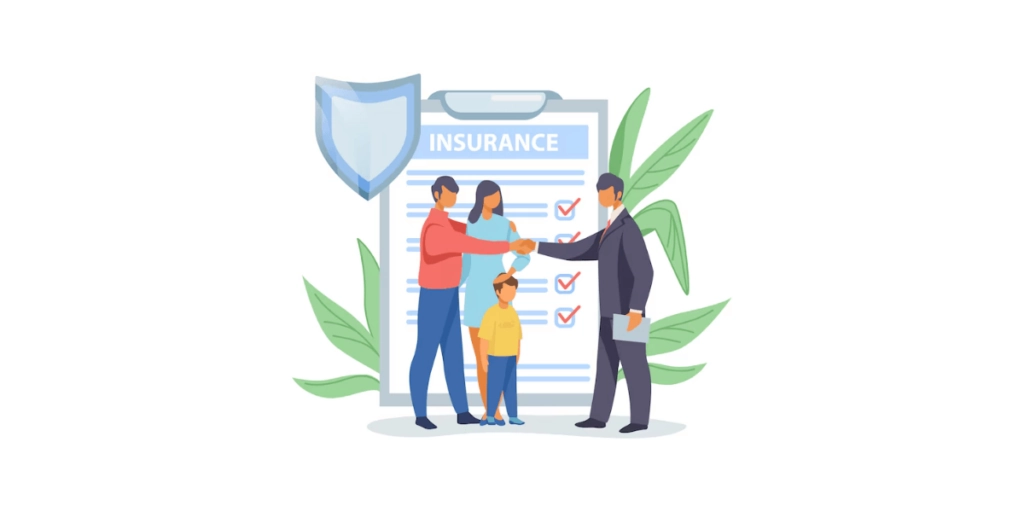
Within the insurance sector, QR Codes have facilitated expedited claims processing, enhanced customer support, and given policyholders instant access to critical data.
Internal procedures and interactions with customers have changed due to the usage of QR Codes.
a. Obtaining policy data
Insurance companies place QR Codes on policy documents so policyholders can scan the codes to access vital information.
It could include premium payments, renewal dates, and coverage limitations.
State Farm puts QR Codes on its insurance policy papers.
When customers scan the QR Code, they can quickly see important details like how much they pay, when to renew, and their coverage.
This helps customers manage their policies without needing to call for help.
b. Streamlined the processing of claims
Customers can use a smartphone app or website to scan and initiate a claim using QR Codes, streamlining the insurance claims process.
This expedites the claims acceptance process and minimizes paperwork.
Allstate has a mobile app lets customers scan QR Codes to start a claim.
Customers can quickly begin the claims process by scanning the QR Codes for insurance on the claim form or accident report.
This cuts down on paperwork and speeds up getting their claims approved.
c. Promotion and creation of leads
Insurance firms utilize QR Codes in advertisements, business cards, and marketing materials to increase clientele and lead generation.
Geico incorporates QR Codes into its print and television advertisements.
People may obtain insurance quotes or learn more about the plans on the webpage when they scan the QR Code. Geico gains additional clients as a result.
25% of insurers allow policyholders to submit claims documentation via QR Codes, enabling easy uploads of images and documents directly from their smartphones. Source: fintechglobal
3. QR Codes in the pharmaceutical industry
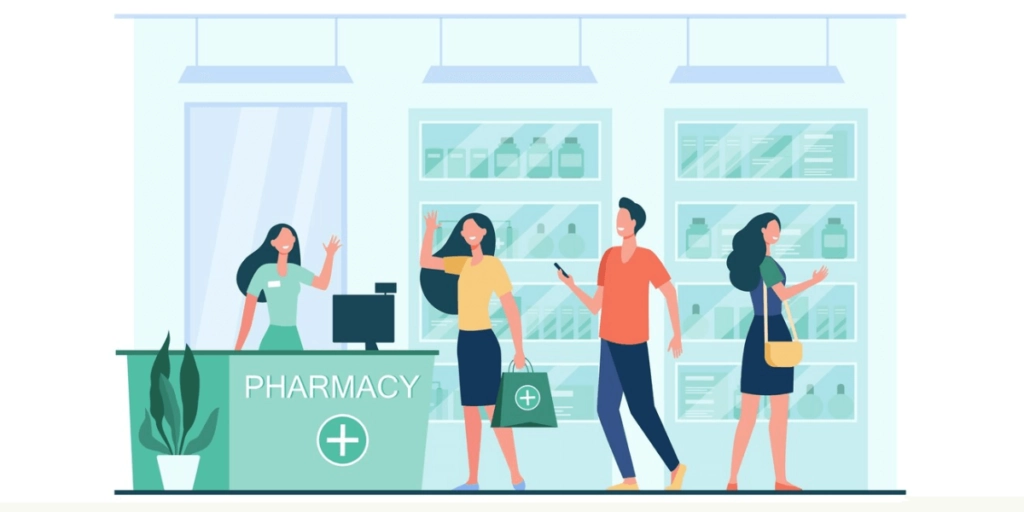
The pharmaceutical business has seen a revolution thanks to QR Codes.
They enable to increase consumer access to vital drug information, expedite supply chains, and guarantee the safety and authenticity of products.
a. Product authentication and counterfeit prevention
One industry that is affected the most by counterfeiting is the pharmaceutical industry.
With QRs on packaging, a simple scan can help verify the authenticity of medications. This ensures the patients recieve legitimate products.
Pfizer uses QRs on their medical vials for the very same reason.
b. Supply chain transparency and tracking
Pharmaceutical products may be precisely tracked from the manufacturer to the pharmacy thanks to QRs.
This openness guarantees that any supply chain problems, misrouting, or meddling may be promptly found and fixed.
To provide complete visibility from production to the point of sale, GSK uses QRs to trace their products in real-time across the supply chain.
This preserves both regulatory compliance and product integrity.
c. Dosage instruction and patient safety
Medication packaging that has QRs on it gives patients precise and comprehensive information.
It could be about dosage, adverse effects, and even video training on how to take the medication correctly.
This increases patient’s understanding of the drug and improves patient safety.
For instance, Novartis ensures patients have all the information they require to adhere to their treatment properly.
They use QR Codes in the pharmaceutical industry to connect them to online resources that provide easy instructions.
In 2022, the U.S. Food and Drug Administration (FDA) reported that 30% of drug recalls were expedited through QR Codes, improving the speed of identifying affected products. Source: FDA
4. QR Codes in press/media
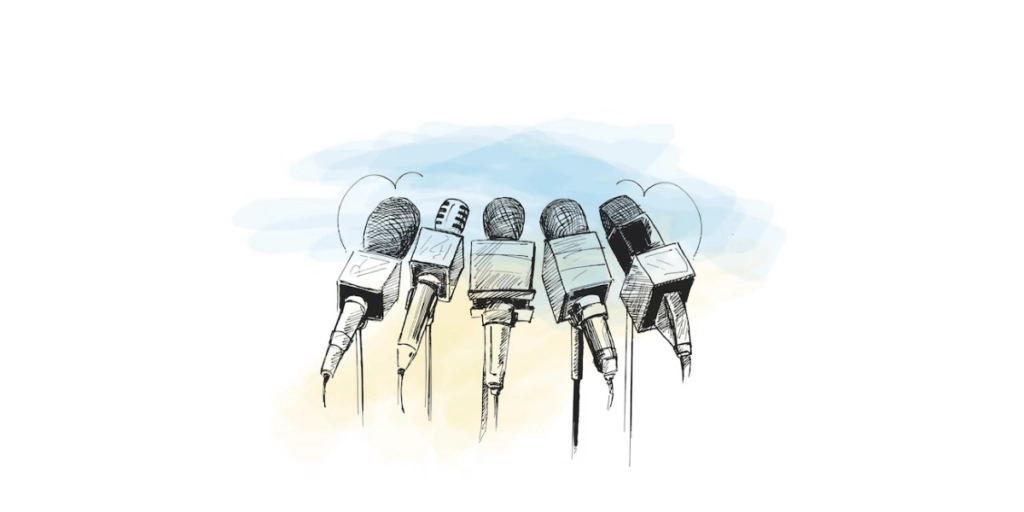
To improve information distribution, increase digital interaction, and reach a wider audience, the press and media sector have adopted QR Codes.
For their readers and viewers, publishers and broadcasters may offer richer, more engaging experiences by adding QR Codes to print and digital material.
a. Increasing the content gain access
Media outlets can link viewers to more content, including interactive graphics, videos, and in-depth articles, by using QR Codes.
An article or magazine page with a QR Code embedded may link to additional digital content.
The New York Times puts QR Codes in its print newspapers. Readers scan these codes and go to extra content like videos and interactive graphics.
This improves the reading experience and helps people learn more about the stories.
b. Integration of paywall and subscription
QR Codes in press are often employed to promote digital edition subscriptions or access to paywalled content.
Readers can easily unlock premium articles and join up for newsletters by scanning a code.
The Washington Post uses QR Codes in ads and print materials to encourage people to subscribe online.
Readers can easily access special articles and sign up for newsletters when scanning the QR Code. This makes it simple for them to read premium content.
c. Audience responses and involvement
Media companies can use QR Codes to conduct surveys, collect reader feedback, and promote conversation involvement.
Users can access a survey, comment box, or social media platform by scanning a code.
BBC News includes QR Codes in its broadcasts and articles to get feedback from viewers.
When people scan the QR Code, they can complete a survey or leave comments about news stories. This helps the audience share their opinions and feel more involved.
A 2023 study found that print media with QR Codes saw a 25% increase in reader engagement compared to those without codes. Source: persuasionnation
5. QR Code visa
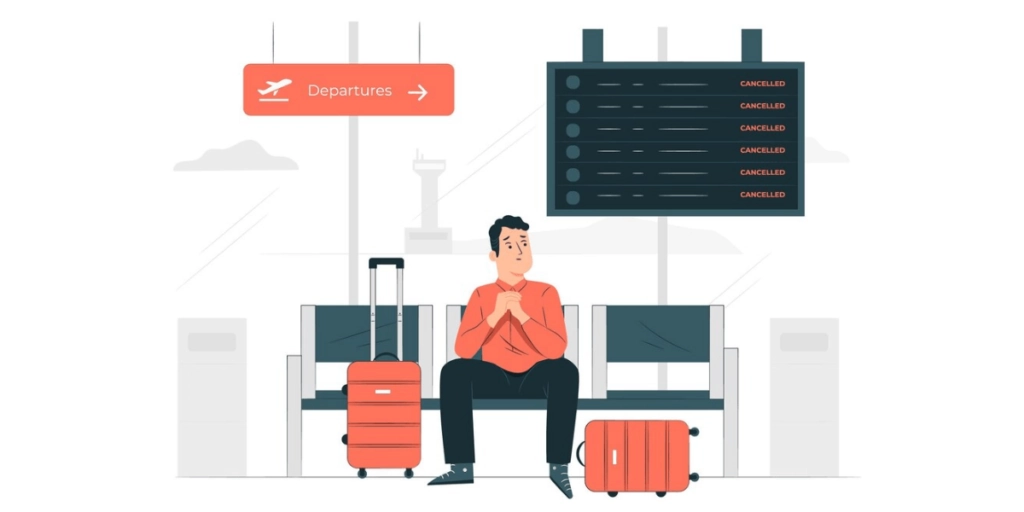
The visa application process has been shortened using QR Codes, which has improved efficiency for both applicants and immigration officials.
Embassies and consulates can lessen the need for physical paperwork, improve security, and provide applicants with real-time access to application status by including QR Codes in their visa documentation.
a. Streamlining the application process for visas
Immigration officials employ QR Codes to rapidly access necessary papers, appointment scheduling, and visa application forms.
On visa application forms, the U.S. Department of State employs QR Codes.
Candidates can quickly check the status of their applications, submit required documents, and schedule online interviews by scanning the QR Code.
This speeds up and simplifies the process.
b. Improving authenticity and security
QR Codes in visas provide a rapid, verifiable link to the authenticity of the visa, improving security.
Some European embassies put QR Codes on Schengen Visa stickers.
When scanned, these codes link to a secure database that confirms the visa is actual. This helps stop fraud and makes sure the visa information is correct.
c. Simplifying border management
Visas and e-visas with QR Codes shorten line wait times at borders because authorities and travelers may quickly scan the codes to confirm travel documents.
Singapore issues e-visas and visas via QR Codes. At border checks, travelers provide these QR Codes. Wait times are decreased when officials swiftly verify the traveler’s visa status by scanning the codes.
Many countries, including India and Kenya, have implemented QR Codes as part of their e-visa systems. In 2022, over 1.5 million e-visas were issued with QR Codes, streamlining entry processes. Source: theeconomictimes
6. QR Codes for software services

Software service providers utilize QR Codes to make software downloads, updates, and service access more accessible and more convenient. They give customers a more natural way to engage with their goods and services by integrating QR Codes into their platforms.
a. Easy access to updates and downloads for software
QR Codes make software installation and updating easier for consumers by offering direct connections to download pages or app stores.
Adobe uses QR Codes in their advertisements. Users are taken straight to the download page when they scan the code.
This facilitates the software’s installation for new users and updates for existing users.
b. Improving client assistance
Software user interfaces incorporating QR Codes allow users to instantly access customer service portals, FAQ pages, and troubleshooting instructions.
Microsoft adds QR Codes to their user manuals. When users scan the code, they go straight to the support page.
This page has FAQs and troubleshooting guides to help solve problems quickly.
c. License and activation of products
Software firms employ QR Codes to make licensing management and product activation easier, guaranteeing compliance and simplicity of setup.
The antivirus software provider Kaspersky uses QR Codes on their product packaging.
Customers can simply activate their software on the page after scanning the code. This helps people get started and streamlines the process.
30% of SaaS companies incorporate QR Codes in their marketing materials to provide instant access to product demos and free trials, making it easier for potential customers to explore offerings. Source: deliverysolutions
7. QR Codes in construction
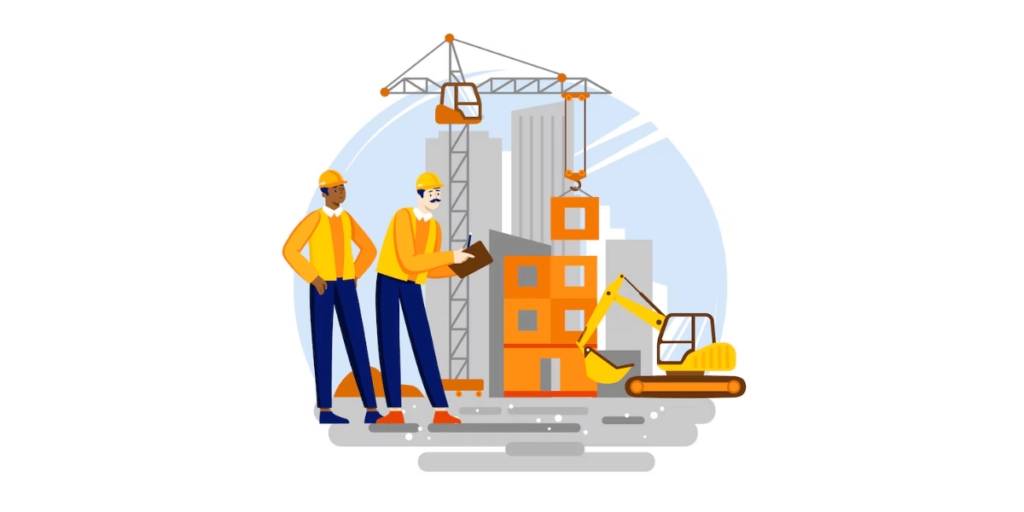
QR Codes are utilized in the construction sector to facilitate communication, improve job site safety, and improve project management.
They offer easy access to safety instructions, blueprints, and material information.
a. Simplifying the handling of projects
Construction managers and workers can obtain project deadlines, specs, and designs on-site by scanning QR Codes.
Skanska is a big construction company that uses QR Codes to simplify project management.
Workers can scan codes on construction documents or site plans to get real-time project details, deadlines, and designs.
This cuts down on paper and ensures everyone has the latest information.
b. Material and equipment monitoring
Companies use QR Codes for construction to control equipment utilization, maintain inventories, and monitor heavy gear maintenance requirements.
Turner Construction uses QR Codes to keep track of tools and materials on job sites. Each piece of equipment has a QR Code.
Workers can scan it to check its usage history, maintenance needs, and service records. This helps keep the equipment in good shape and reduces downtime.
Similarly, many roofing companies leverage QR Codes for roofing businesses to streamline access to project details, material specs, and safety protocols directly at the job site.
The use of QR Codes for emergency preparedness resulted in a 25% increase in workers’ confidence regarding site safety. Source: researchgate
8. QR Codes in fitness

From improving member engagement in gyms to offering simple access to exercise manuals and diet programs,
QR Codes for fitness significantly improve the overall experience..
Personal trainers and fitness establishments use QR Codes to provide more convenient, interactive services.
a. Tailored exercise and training plans
Personal trainers and gyms can offer customized training plans and fitness regimens via QR Codes.
Gold’s Gym uses QR Codes on workout machines. Members can scan the codes for personalized exercise plans and video guides for each machine.
This helps gym-goers learn how to use the equipment correctly.
b. Meal plans and nutrition
Fitness aficionados can easily obtain calorie-tracking tools, meal prep tips, and tailored nutrition plans with the help of QR Codes.
QR Codes are incorporated into the MyFitnessPal app.
Food packaging has QR Codes that users can scan to log their meals and monitor their caloric intake conveniently.
By scanning codes that trainers share, they can also uncover nutrition programs and meal prep ideas.
c. Event and membership organizing
Fitness centers employ QR Codes to manage event registration, schedule classes, and expedite membership procedures.
Planet Fitness uses QR Codes to sign up for events and check class schedules.
Members can scan codes posted in the gym to join fitness classes or special events, making it easy to manage attendance.
30% of gyms and fitness centers use QR Codes for membership check-ins, allowing members to scan codes for quick access and tracking attendance.
9. QR Codes for NGO

QR Codes aren’t just useful for government initiatives. They’re equally powerful for non-governmental organizations (NGOs) to boost donations, improve transparency, and engage better with volunteers and supporters.
QR Codes for NGOs are becoming increasingly significant for digital outreach and fundraising campaigns.
a. Making donations simpler
Supporters can donate to charities more easily since QR Codes directly connect to safe payment platforms.
The WWF uses QR Codes on flyers and social media. Supporters can scan these codes to donate directly to specific conservation projects, making it easy to give money quickly.
b. Improving openness
NGOs can give people access to financial reports, progress reports, and details on the utilization of funds by using QR Codes.
c. Organizing volunteers and events
QR Codes help organize volunteer sign-ups, event registrations, and communications during NGO operations.
Habitat for Humanity uses QR Codes to register volunteers and organize events.
Flyers and social media posts have codes people can scan to sign up for fundraising events or construction projects quickly.
The Donation Point Go service in Australia has enabled over 700 charities to raise more than 4 million Australian dollars (approximately 2.5 million US dollars) through QR Code donations displayed on various materials, including volunteers’ apparel. Source: websiteplanet
10. QR Codes in space

QR Codes are used in the space sector for public education, mission data tracking, and spacecraft maintenance. They are an effective instrument for increasing public outreach and operational efficiency.
a. Maintenance of spacecraft and equipment
Space organizations ensure that every part of their spacecraft is inspected and repaired on time by using QR Codes to track the maintenance schedules of individual components.
NASA uses QR Codes in space components to track maintenance schedules.
Each part can have a QR Code that provides technicians with immediate access to maintenance records, repair instructions, and safety information, ensuring that inspections are done promptly and efficiently.
b. Monitoring mission data
Engineers and scientists can quickly get specific mission data, such as experiment findings or satellite telemetry, by using QR Codes.
The ESA employs QR Codes in its mission control centers. Engineers can scan QR Codes to quickly retrieve specific mission data, such as satellite telemetry or experiment results from ongoing missions.
This allows for faster decision-making and data analysis during critical mission phases.
c. Public Outreach and Education
Education-based agencies interact with the public with QR Code-based resources that provide instant access to virtual experiences, space mission updates, and instructional materials.
Space Center Houston uses QR Codes in exhibits to engage visitors. Scanning these codes provides access to virtual reality experiences, detailed information about missions, and updates on current space projects.
This interactive approach enhances visitor learning and engagement.
11. QR Codes for petroleum industry
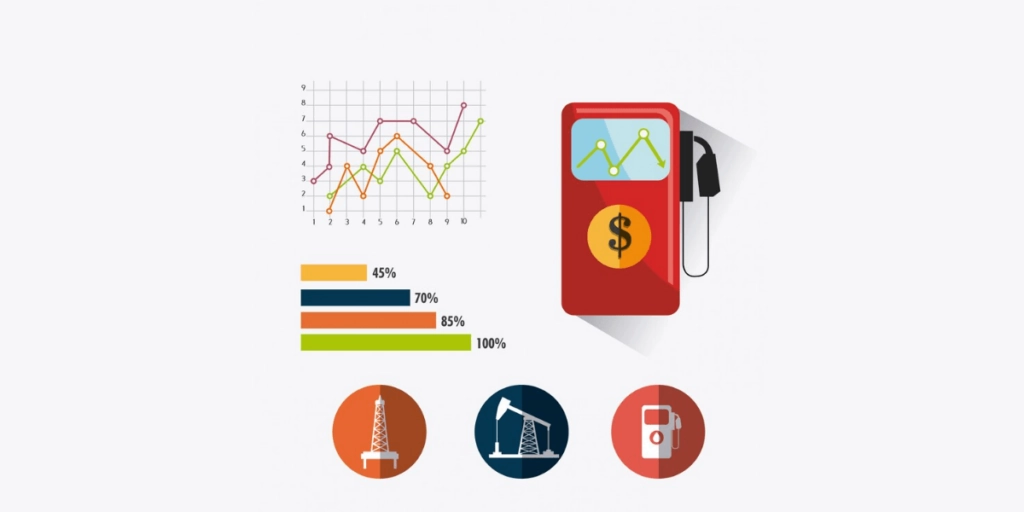
The petroleum business confronts complex consumer involvement, supply chain management, and safety issues.
The introduction of QR Codes for petroleum has streamlined several operations, including asset tracking, maintenance, and even gas station customer service.
These codes give customers a more tailored experience while increasing productivity and guaranteeing improved oversight of operations.
a. Inventory and asset management
QR Codes are widely used in the petroleum business to track and manage fuel storage tanks, pipelines, and equipment. By making asset monitoring easier, QR Codes guarantee efficient management of vital resources and infrastructure.
Shell uses QR Codes to track fuel tanks and equipment at refineries. Workers scan the code to check fuel levels, maintenance status, and other details. This makes it easy to manage fuel and equipment.
b. Scheduling maintenance and tracking equipment
Regular maintenance is necessary for petroleum equipment to last a long time and be safe.
Engineers can quickly and easily verify the maintenance history and plan future maintenance for equipment, cars, or pipelines with QR Codes.
ExxonMobil tracks maintenance on oil rigs and pipelines using QR Codes. To view previous maintenance and plan upcoming repairs, technicians scan the code. This keeps everything operating safely and smoothly.
c. Interaction with customers at gas stations
To enhance the consumer experience at gas stations, petroleum firms also utilize QR Codes. They may access promotional offers, contactless payments, and loyalty programs through easy QR scans.
Customers can pay at Chevron petrol stations using QR Codes on the pumps instead of cash or credit cards.
They can pay by scanning the code, and they can even exchange points for prizes. Getting petrol is quick and straightforward because of this.
Major companies like ExxonMobil and Ukrnafta have integrated QR Codes into their payment systems, allowing customers to make secure transactions at gas stations by scanning codes displayed at pumps. This method promotes safety and convenience, especially during the COVID-19 pandemic.
Summing Up
QR Codes are a game changer across every industry. Whether in logistics, retail, or healthcare, QRs offer convenience and engagement like never before.
They are intelligent and scalable solutions for businesses looking to stay ahead of the curve.
If you’ve read here, you know everything about QR Code usage by industry. Feel free to ask any questions/queries you may have in the comments section!
